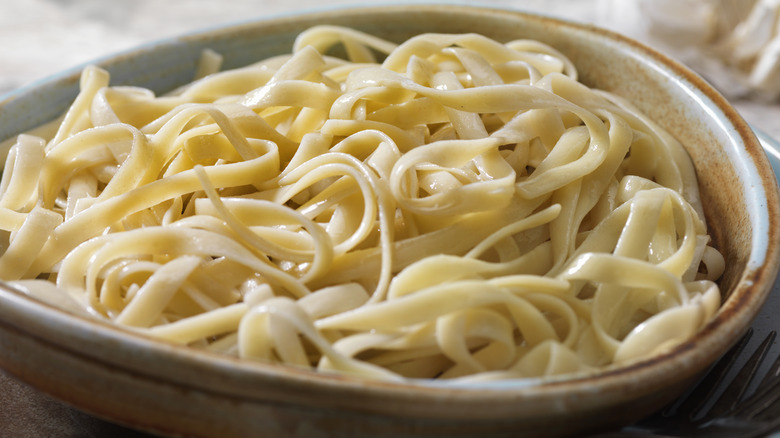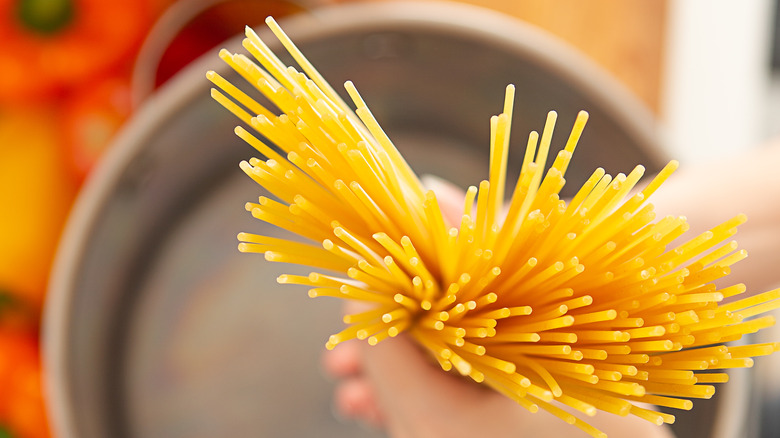Is There A Difference Between Egg Noodles And Pasta?
With so many types of noodles out there to twirl around a fork, comfort-food lovers are never in short supply of recipes and flavor combinations to try. Whether it's traditional Italian pasta, a savory bowl of chicken noodle soup, or some umami-infused udon noodles, the possibilities are endless when you're in the mood for a quick, noodle-based meal. "Pasta" is frequently used as an umbrella term to describe any noodles, but as far as egg noodles are concerned, a few distinct differences place these foods in entirely separate categories.
While there's no hard rule forbidding you from swapping egg noodles with pasta and vice versa, pasta is generally better suited for Italian dishes and preparation styles due to the texture it takes on when cooked. Many simple egg noodle recipes will call for a short cooking time (usually under five minutes) to give a batch of fresh noodles a pleasantly tender, floppy texture. Pasta, on the other hand, is typically cooked longer to achieve a slightly chewy, al dente consistency sought after in Italian cuisine.
Besides textural differences, egg noodles and pasta also differ in shape. The former, like those in chicken noodle soup or stroganoff, are usually ribbon-like, while the latter is essentially every other noodle shape you can think of. Perhaps more important than all these distinctions, however, are each dish's ingredients — egg noodles, of course, must contain eggs.
Dried pasta rarely contains eggs
You can often tell when a noodle contains eggs by its yellow tint, though homemade pasta recipes will sometimes call for eggs to make the noodles more flexible and to impart a richer, more savory flavor. As for the store-bought, dried pasta that's probably sitting somewhere in the depths of your pantry, eggs aren't on the ingredient list. Unlike egg noodles, pasta is made from a type of high-gluten wheat called durum — literally meaning "hard wheat" — which is made into a flour known as semolina to craft pasta noodles.
Essentially, if semolina is listed as a primary ingredient on the box, it's pasta, though some types of egg noodles are hybrids that contain both eggs and semolina. Besides this exception, the two are generally considered separate based on their main ingredients.
There are plenty of dangerously delicious pasta recipes that pair al dente noodles with heavy sauces to create a hearty meal, while egg noodles' bouncy texture makes them great for lighter dishes. Now that you're equipped with a bit more noodle know-how, you can feel more confident when branching out and trying new recipes.

